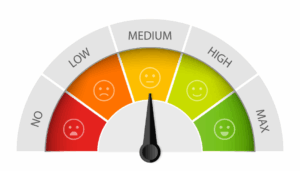
Even today in the year 2025, loan against property is one of the most advantageous ways of fulfilling mountain-sized financial needs. If you want to raise funds for study, business expansion, or medical reasons, mortgaging your property can give you massive funding. Loan against property sanction, however, depends to a great extent upon the accuracy and judicious submission of documented documents for loan against property. Incomplete or discrepancy documents result in delay, rejection, or additional complications at processing stage.
To make the process easy while submitting with your documents, it’s essential that you remember the do’s and don’ts of submitting. Remembering these will not only save your efforts and time but also improve your chances for on-time approval.
The Importance of Proper Documentation
Let’s start by recalling why delivering the right documents for loan against property is necessary. Banks take property loans against collateral seriously due to the high-value risk. They ensure your documents to be valid, complete, and lawfully clear. Properly prepared documents exhibit your credibility, financial health, and rightful ownership of the collateral property.
Do’s of Submitting Documents for Loan Against Property
1. Understand the Documents Required
Begin by familiarizing yourself with what the documents are for a `loan against property’. Banks and lenders usually ask for the following:
- Identification proof: Aadhaar card, passport, voter ID, driving license, etc.
- Address proof: Utility bills, rent agreement, or passport.
- Income proof: Salary slips (for salary earners) or profit and loss account (in the case of self-employed borrowers).
- Property documents: Title deed, registration, and encumbrance certificate.
- IT Returns: Income tax returns of the previous 2-3 years.
- Bank statements: Recent bank statements of the past 6 months with transaction history.
Make sure cross-checking of the personal requirements of your lender as documentation processes can differ in 2025.
2. Check All Documents Are Legible
One of the greatest mistakes that candidates make is photocopying unreadable documents which are not legible. Ensure copies of your submitted documents are well-presented, legible, and can be read easily. Poor submission will lead to automatic rejection or rejection for resubmission.
3. Confirm Ownership of Property
Double verify, before submitting your documents for loan against property, that all documents relating to ownership are in place and up-to-date. Ownership disputes or non-availability of proper title deeds will surely tarnish your application process. Submit original title deeds when called for, as they are a key determiner of the ownership.
4. Furnish Complete Address Proof
When providing address proof, accompany it with a document specifying an exact and specific place, e.g., rent receipts or bills. The lender needs your residential stability and traceability for them to be able to contact you during times of instant loan operations.
5. Check Loan Eligibility
Verify your eligibility criteria according to lender requirements for income, repayment capability, property age, and property value prior to filing your documents. Pre-planning will ensure that your application is not declined on grounds of compliance.
6. File Current Financial Statements
If you’re self-employed, ensure your income proof, profit and loss statements, and audited financial records are updated. Salaried applicants should submit their latest payslips and highlight any increments or bonuses that positively impact income levels.
7. Maintain Transparency
Always maintain transparency with lenders regarding your financial state and property status. For instance, if the property you’re pledging has other liabilities or legal issues, declare it upfront. Hidden complications can lead to legal troubles later.
8. Ensure Timely Submission
Early submission of your documents for loan against property ensures the process is hassle-free. Keep and prepare your documents well in advance to avoid delay in meeting deadlines, resulting in unnecessary delays and putting extra burden on your relationship with the lender.
9. Keep Originals Ready
While duplicates of the documents are generally sent later on, even a chance of lenders asking for originals at some future date exists for verification. Have all original documents ready so that no last-minute rummaging takes place.
10. Reverify Needs Before Submission
Reverify against the lender’s requirement list before sending your documents for evaluation. Do not miss any required documents by making your own list.
Don’ts for Presentation of Documents for Loan Against Property
1. Don’t Present Incomplete Documents
Inaccurate information in documents is one of the primary causes of rejection for loan applications. For instance, never present documents with outdated data like expired identification documents or incomplete property deeds.
2. Don’t Present Misleading Information
Never attempt to falsify information on your documents to expect rapid approval. For example, falsifying your income or ownership documents may lead to severe legal repercussions and lifetime loss of trust with banks and other financial institutions.
3. Don’t Miss Ownership Discrepancies
When co-owning properties, inform other co-property owners of the loan application. Outstanding ownership issues or discrepancies in ownership can turn into huge bottlenecks to approval.
4. Don’t Neglect Signature Consistency
Ensure all required signatures are consistent in your filed documents. Differences in signatures can cause rejection or holdup because lenders will be assuming forgery or sign verification confusion.
5. Don’t Forget Financial Details
Hidden dues or non-performing assets (NPAs) may go against your borrowing credit for the verification period. Do not take short cuts while submitting affidavits, as any discrepancy may boomerang to a very large extent for the verification period.
6. Never Take Short Cuts on Affidavits
Affidavits supporting your property rights as an owner, legal documents that are not to be bypassed or half-hearted, shall be obtained through the services of a lawyer in case they prove to be needed.
7. Avoid the Mistake of Neglecting Communication
Once the papers are filed, be on your guard. Avoid making the wrong move of not complying with lender follow-up calls for submitted documents. Timely reply to their questions is an exhibition of professionalism as well as responsibility.
8. Do Not Forget Tax Payment Proof
Proof of payment of property tax is most often a document that has to be filed for verification of loan against property. Failure to file them can delay processing.
9. Don’t Turn Over to Unauthorized Parties
Never give over your documents of property to any unauthorized officer or lender. Always give them over to genuine institutions to prevent fraud or misuse of documents.
10. Avoid Turning Over in Hast
Even though speed is always appreciated, giving over your documents in a rush without cross-verifying facts can cause expensive mistakes. Check every document twice to ensure facts are correct and comply with the lender’s requirements.
Conclusion
Maintaining appropriate and timely documents for loan against property is necessary in availing loans without unnecessary hassle. By possessing the above do’s and refraining from don’ts, anyone can apply for a loan effortlessly in 2025 and can avoid rejection threats.
Don’t ever forget that a loan against property is all about obtaining collateral of something precious and that lenders are extremely fussy about every minute detail of your documents. Prepare your documents well, take advice if necessary, and always approach trustworthy institutions for something like this. With proper planning, you will have better chances of getting approved and it will become a cakewalk for you to raise funds.
Last of all, your loan qualification is dependent on how well and correctly prepared your documents are, so spend some time in submitting it correctly the first time. Be honest, respect the process, and work together hand-in-hand with your lender to pave the way for a hassle-free borrowing experience.





